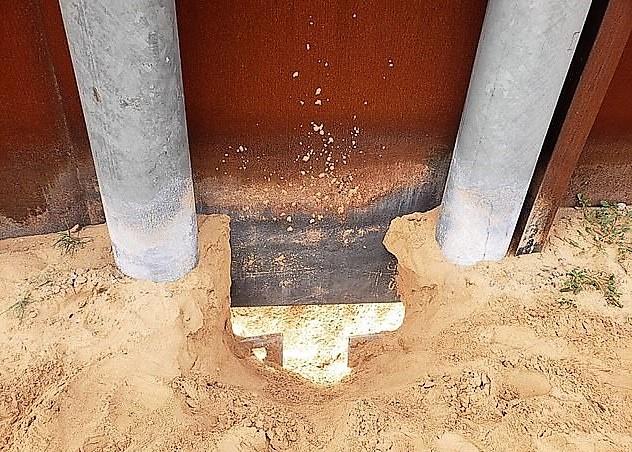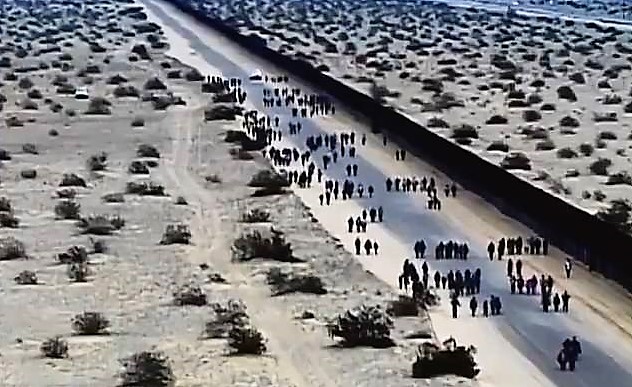Anyone who has spent time on the border knows that a big wall is destined to be dug under or climbed over. That’s exactly what happened near Yuma, Arizona on Monday.
A group of migrants said to be the largest ever illegally tunneled under the southern U.S. border fence and surrendered to Border Patrol to request asylum.
The group of 376 Central Americans inundated agents after crossing the border through a series of hasty tunnels near Yuma.
I’ve written about my own experiences covering the border earlier in my journalism career, and often noted that the wall is more a political symbol than practical deterrent.
The agency said 200 of the group were minors, and that nearly all the rest said they were their parents, meaning that they will likely be released into the U.S. as their asylum claims are processed.
It is believed to be the largest single group to cross the border illegally to request asylum.
The Border Patrol has said that smugglers transport large groups to the border and then instruct them to cross and turn themselves in.
Officials said that most of the group entered the U.S. through seven small openings burrowed under the border barrier.
The crossings took place at a remote stretch of border where old fencing is about 12 feet high and the ground is sandy. Stretched thin, CBP has only three agents patrolling the 26-mile section of border.

Officials said that most of the group entered the U.S. through seven small openings that were burrowed under the border wall.
By Thursday, hundreds of the asylum seekers were being held in cinderblock cells with thick glass windows as CBP agents worked to process them and provide humanitarian needs.
The asylum seekers were separated into cells: fathers with sons, fathers with daughters, unaccompanied minors and mothers with children.
One man in the group told the network that he left Guatemala eight days ago and made most of the trip by bus along with his 12-year-old daughter, paying a coyote $5,000 to get them to the border.
He planned to travel to San Diego after leaving the processing center.
The overall number of unauthorized crossings has plummeted since its peak in the 2001, when CBP logged about 1.6 million apprehensions, according to government statistics.
BP Yuma Border Sector Chief Anthony Porvaznik said his unit needs better border barriers, but more urgently it needs funding to provide for these families.
“That’s our No. 1 challenge that we have here in the Yuma sector, is the humanitarian problem,” Porvaznik said. “As I mentioned, 87 percent of the apprehensions here are family units and unaccompanied alien children.”
